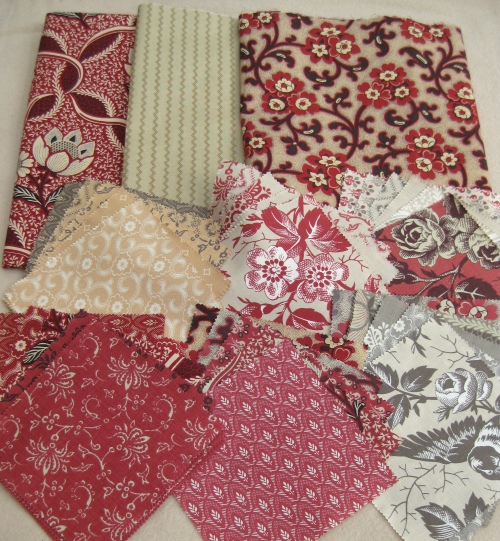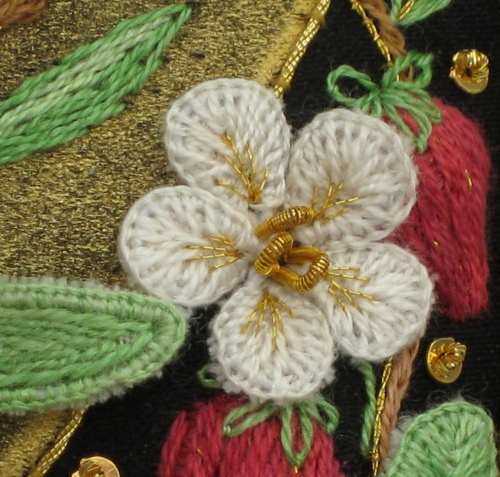I bought this book recently when I was in Birmingham, in the Cotton Patch shop, getting my ‘basic supplies’ for quilting. OK, I know this book isn’t necessarily ‘basic’, but I’d been reading the reviews on Amazon, and drooling over the photos in it, so when I saw the actual book in the shop, I couldn’t just leave it there, could I?!
The book is a large format paperback of 80 pages (cost me £14, but the price varies online from £12 to £19). The book has 15 smallish quilt designs, with detailed instructions, fabric requirements, piecing directions, and so on. Average finished size of the quilts is about 22 x 28 inches – these are wall quilts, not bed quilts, which is exactly what I want to make. The back half a dozen pages give information on quilting basics, but I found that they were a bit too brief for me, as a beginner. That said, however, Carol does give a very useful tip for making ‘flying geese’ units (a triangle with two smaller triangles sewn to the short sides), using only a rectangle and two squares instead and then stitching diagonally across the squares and flipping back the squares across the diagonal to make the triangles, which means that the fabric is less likely to stretch out of shape, and more likely to end up the correct size. I have tried the ‘traditional’ way, and got in a real mess with it, so I was pleased to see this better method explained.
This is the quilt I want to make first (I could make all of them though – they’re so scrummy!). It’s called ‘Lincoln’s Logs’, and doesn’t have even ONE triangle in it (easier for a beginner).
I’ve already bought some fabric – this is from a range called Chateau Rouge, by Moda fabrics. I bought mine on Ebay – if you live in the USA, you can buy it easily all over the place. In the UK, nothing’s ever that easy!
Later on, I’d like to make this quilt from the book, too.
And this one……
You may have guessed, red is my favourite colour 🙂
The book is great, and a good incentive for me to practice basic techniques so that I can progress on to more complicated designs. A lot of ‘basic’ patchwork books have designs in that just aren’t my style – cot quilts, and ‘bright pastels’ that just put me off. But this book has muted, refined designs that are so lovely, I could make them all (time permitting). The instructions are really clear, and the pictures, as you can see above, are gorgeous. Well worth getting!
Title: Civil war Legacies: Quilt patterns for reproduction fabrics
Author: Carol Hopkins
Publisher: That Patchwork Place (imprint of Martingale & Company)
ISNB: 978 1 60468 057 7 (Paperback, 80 pages)
Price: US$24.99 (about £14 in the UK
~~~~~~~~~~~~~~~~~~~~~~~~~~~~~~~~~~




















